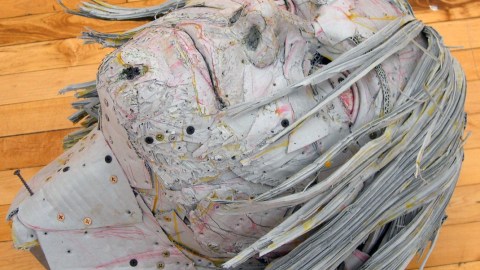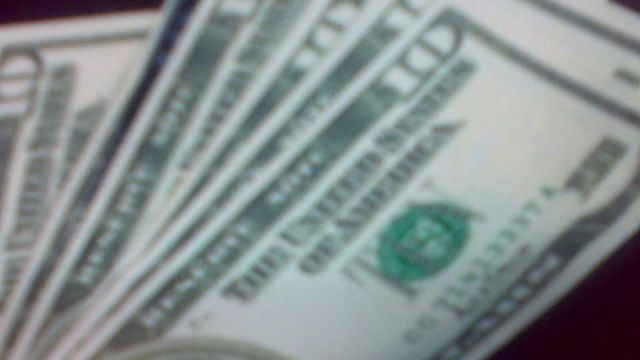Entertain Us: Kurt Cobain Remembered at the Seattle Art Museum

“Here we are now,” Kurt Cobain intoned in 1991 on Nirvana’s Nevermind album, “entertain us.” With that catch phrase, the entire genre of grunge rock launched itself into the cultural stratosphere. Here we are now, however, in 2010, sixteen years after Cobain took his own life, still wondering what that genre and Cobain himself really said, and still say to us today. The Seattle Art Museum’s new exhibition Kurt gathers together 80 works by an international cast of artists to surround the memory of Kurt Cobain and interrogate the prisoner. They entertain us while asking the big questions that Cobain himself asked of a generation and, ultimately, himself.
Seattle, the birthplace of grunge, is the perfect location for this exhibition. The “teen spirit” Cobain sang about permeates youth culture today still, but the echoes of the grunge movement continue to resound for the teen of today. Cobain’s dying young legitimized his angst and gave eternal life to his lyrics. As the museum’s press release for Kurt asserts, “themes of
freedom, longing, loss, desire, and confusion” assault your eyes through the works collected just as Nirvana’s jarring chords assaulted your ears nearly two decades ago.
Scott Fife’s sculpted portrait of Cobain (shown) illustrates the different approach artists have taken to this different subject. Fife assembled archival cardboard with glue and screws to build a portrait of Cobain that fits the man perfectly. The simple cardboard reflects the simplicity of the man who would mock the pretentiousness of marble or other fine materials. The visible screws keeping the work together aptly mimic the tenuous unity of Cobain’s own psyche. You look at Fife’s work and wonder when or if it will explode under internal pressure, just as the real life Cobain’s presence demanded you pay attention or else miss something big, horrible, or both.
In addition to Fife’s sculpture, Elizabeth Peyton, Douglas Gordon, Rodney Graham, Slater Bradley, Daniel Guzmán, and others use paint, video, and photography to memorialize Cobain. “What is truly amazing,” gushes Michael Darling, Jon and Mary Shirley Curator of Modern & Contemporary Art at the Seattle Museum of Art, “is how recent a lot of the work is, as Kurt’s story continues to be relevant, meaningful and far-reaching. It is so clearly resonant in the Northwest, but it is also a global phenomenon.”
Cobain’s posthumous portraiture may serve as a template for future approaches to contemporary figures. “Contemporary conceptions of portraiture… are far different than those of the past, as they are suffused with the obsessiveness of fans, guided by the profusion of electronic media in multiple forms, and in many cases bolstered by reams of information and research now available about our objects of desire,” the wall text to the exhibition reads. “Perhaps most importantly, in the case of Cobain and many celebrities like him, the sitter is never physically present, but rather their visage is called up from global image banks.” Those global image banks provide the raw material of myth much as the Greek myths did centuries ago. Cobain becomes our Icarus, flying too close to the sun of reality before coming back down to earth.
The man who ruled the world of grunge music, however briefly, returns from the dead to rule his memorialization through the eyes of these dedicated artists. They entertain us with reflections of the spark that illuminated Cobain’s life and his music, yet remind us of the conflagration lit by that same spark that consumed Cobain’s existence.
[Image: Kurt Cobain, 2006. Archival cardboard, glue, and screws. Scott Fife, American, born 1949. 22 x 18 x 20 in. Collection of Theodore M. Wight. Courtesy of the artist. © Scott Fife.]
[Many thanks to the Seattle Art Museum for providing me with the image above and other press materials for Kurt, which runs through September 6, 2010.]





